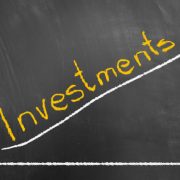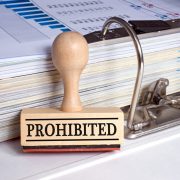The ABCs of Self-Directed IRAs
Using a Self-Directed IRA means more control, more flexibility, and more freedom when investing for retirement. But you may be unfamiliar with the accounts, which means that you’re hesitant about opening one up for yourself. To that end, we’ll explore the ABCs of Self-Directed IRAs—the most essential facts you need to know—so you can explore this concept as a potential avenue for your retirement investment. Here’s what you’ll need to know.
Why Choose a Self-Directed IRA?
The most fundamental question is to answer why investors want a Self-Directed IRA in the first place. What’s wrong with other styles of investing? More traditional styles, such as putting money in a retirement account that you get from work?
The answer is that a Self-Directed IRA gives you the full freedom that’s possible with a retirement account. For many people, working through an employer-sponsored plan or a traditional brokerage means that you only have access to what they give you. For an employer-sponsored plan, that could mean a limited amount of funds to choose from. With a traditional brokerage firm, it may mean that you can choose from a wider range of stocks and funds, but that’s about it.
With a Self-Directed IRA, on the other hand, you can expand your retirement portfolio to the full range of possibilities the IRS allows. That means some precious metals, real estate investments, private company stock, or even LLCs. This provides you with more freedom and flexibility to make a retirement account the way you want to make it. Of course, you’ll have to pay attention to the retirement investing rules here—after all, you don’t want to be hit with penalties and fees when things go awry. And you’ll have more responsibility for performing research and doing due diligence to ensure that your investments are the investments you hope they are. But ultimately, many investors like having that additional control.
How Does a Self-Directed IRA Work?
We’ve talked a lot about freedom and flexibility in a retirement account like this. And that’s a great start. But you might still wonder how the entire process works.
A Self-Directed IRA means you’ll work with an IRA administrator. The administrator of the account carries out the buy/sell actions on behalf of that account. You always have this type of relationship with an IRA, but you may simply not notice it because it’s so easy to issue buy/sell orders for stocks and stock funds.
With a Self-Directed IRA, you can issue buy and sell orders directly to your administrator. Let’s say you were working with American IRA, for example. With American IRA, you’d issue a buy or sell order to us. We would carry it out on behalf of the IRA. The IRA would then end up with the purchased investment or would sell the investment in question. You’d still be the owner of the IRA. And we wouldn’t be a financial advisor—we’d simply be the administrator making sure the proper paperwork goes through and that the account is secure.
With this arrangement comes more freedom and responsibility. And for many Self-Directed IRA investors, that’s exactly what they want. They want the choice to put real estate in an IRA, for example, yielding the tax benefits that come with those investments. Or they might want to put private company stock in an IRA because they know that it can potentially provide aggressive returns. Ultimately, what you do with the money in your account is up to you.
Interested in learning more about Self-Directed IRAs? Contact American IRA, LLC at 866-7500-IRA (472) for a free consultation. Download our free guides or visit us online at https://americanira.com/.









